Effects pedals and battery-powered amps are convenient and portable, but they still run off of disposable batteries, usually of the AA or 9V varieties. I sure don’t need to tell you that buying and keeping stock of alkaline batteries is a pain in the ass and expensive. Surely there’s a better way.
You might think: “rechargeable AA/9V batteries! That’s the answer!” But no, no they’re not. Actually, they kind of suck.
Here’s why:
- They have lower capacity than regular alkaline batteries.
- They degrade in capacity over time.
- There’s no way to tell how much charge is left in them.
- You need a special appliance to charge them.
- They are failure prone. I’ve had lots of them just kick the bucket halfway through their operating life and refuse to charge.
- They self-drain. Don’t use your gizmo for 9 months or so? Too bad, the batteries died in there. You should have recharged them right before putting them in which, like, defeats the purpose.
- And here’s something you may not have known: They straight up run at the wrong voltage.
On that last point: A rechargeable NiMH AA battery is 1.2V. Alkaline equivalent is 1.5V. That’s a 20% difference in the unfavorable direction. There are 9V rechargeable batteries on the market that run at 7.4V… huh?! That’s not even close.
While most devices have an operating nominal voltage much lower than full capacity, they are optimal at full voltage. And you can bet it will drop below nominal much sooner when you’re running at 20% less to begin with. Further, running at lower voltage for audio gear can lead to lots of nasty distorted sounds that would drive you crazy trying to figure out. I’ve found out the hard way.
Wouldn’t it be nice if you could convert your gear to just plug-in recharge… and have a battery life indicator… and operate much longer between charges… and basically work kinda like… you know, your smartphone?
That last thing got me thinking: what about those portable USB LiPo power banks for charging said smartphones? They have LiPo batteries in them, which is a superior chemistry to NiMH. They last super long and have very low-self discharge. They also have convenient LED battery life indicators on them. And you might already have one.
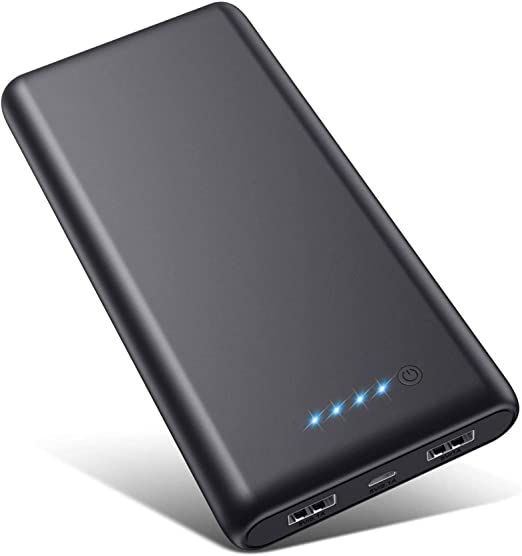
Only problem, though they operate at 5V. Doesn’t really help with pedals and Roland Cube amps which run at 9V.
That’s where a step-up converter comes in. I was able to find these on Amazon (affiliate link), which can step up a 5V USB power source to 9V or 12V. Amazing, right? They terminate to a standard barrel connector which would go right into the AC adapter plug in your device.
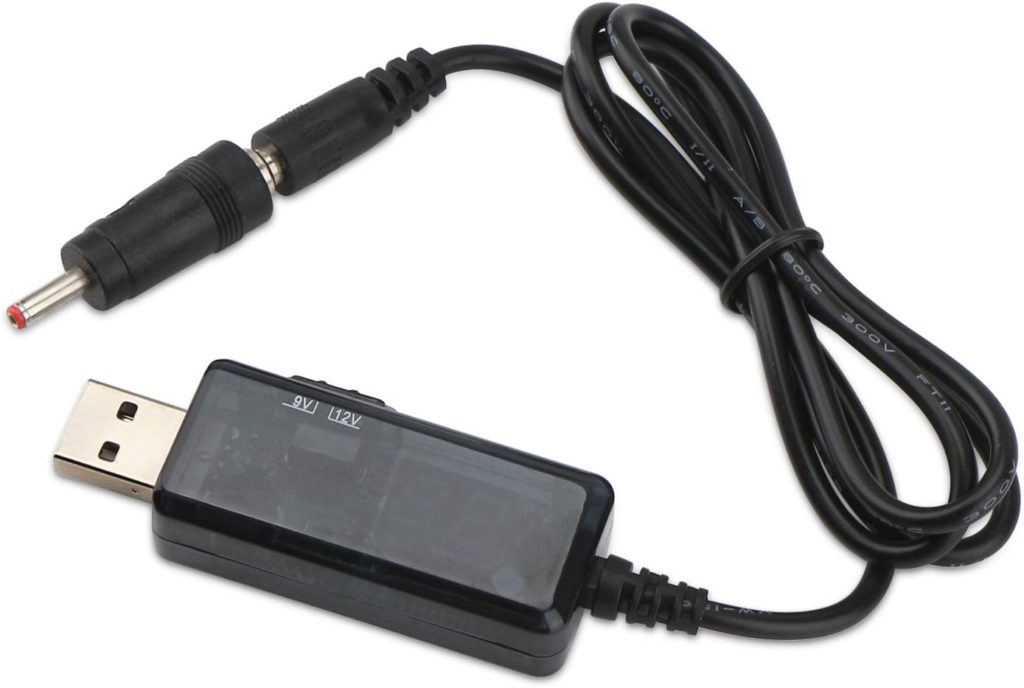
Another thing, though. The polarity of the AC power input of most pedals and Roland Cube amps is center-negative. How to tell? Look for an icon like this near the AC jack:

Since this converter’s plug is center positive, so you need to reverse its polarity. If you’re lazy and like spending some extra bucks, you can buy a cable to do this. Looks like this:
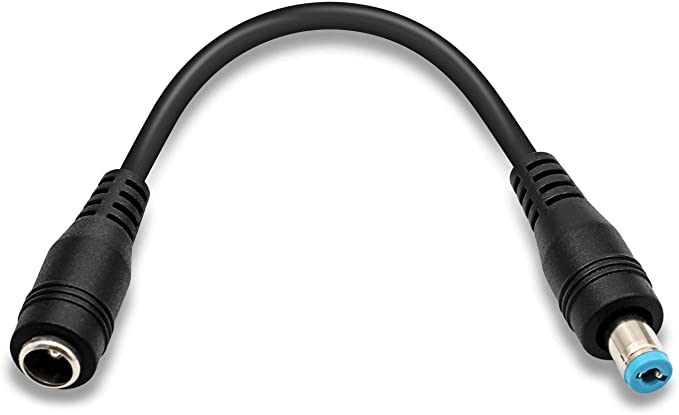
Here’s a link to that (affiliate link).
If you’re like me and you don’t want the extra bulk and like to take things apart, you can just pop open the step-up converter casing like this:
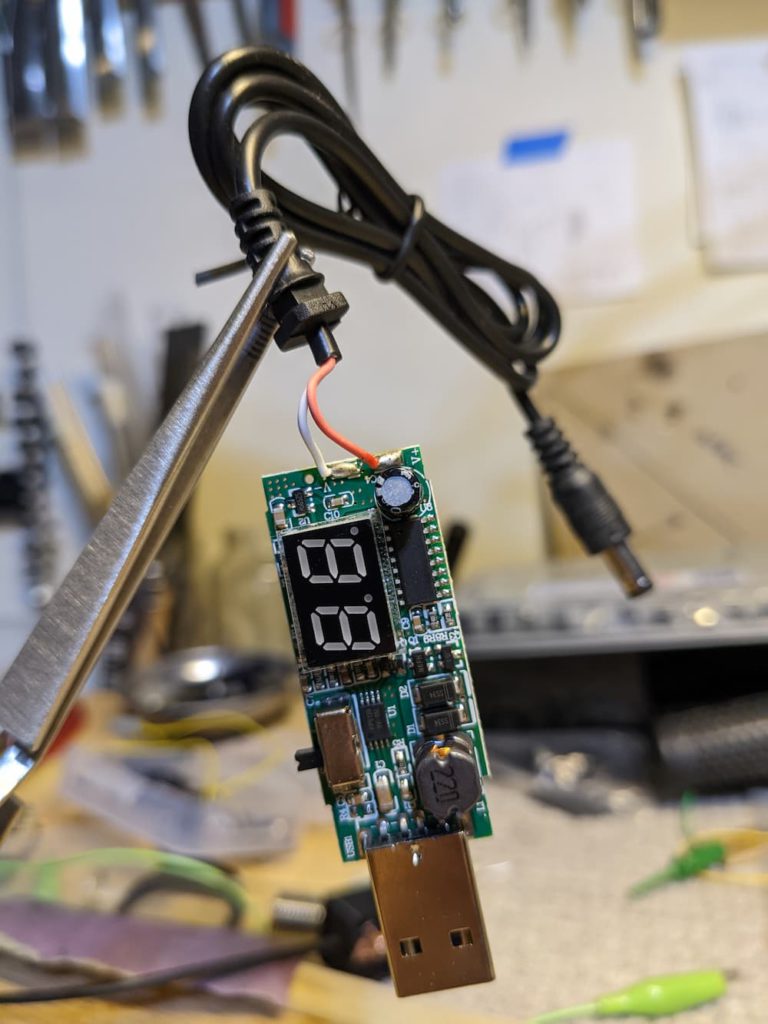
Then desolder the red and white leads, and flip them around so the red wire goes to “V-” them, like so:
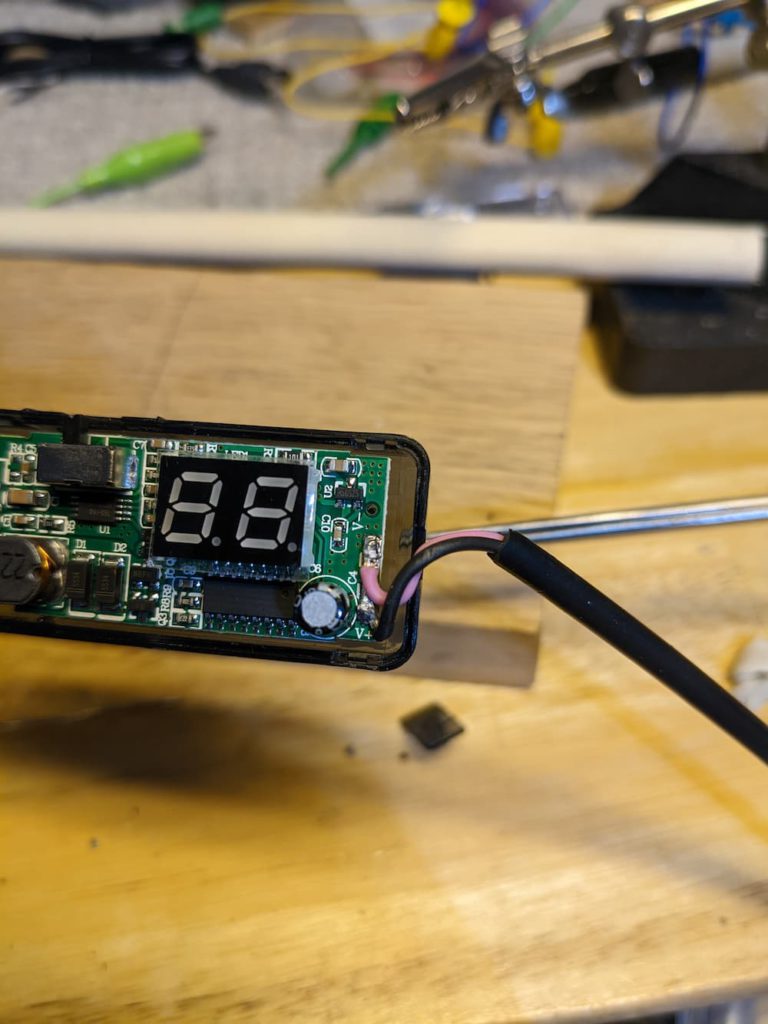
There, now the center terminal of the existing connector is negative and you can plug it right into a guitar pedal or 9V amp.
As an extra safety measure, I popped off the plastic switch handle and taped over it to prevent myself from accidentally switching it to 12V. Probably a good idea for you do the same.
In order to make things more self-contained, I velcro’ed a thin 10000 mA-hour battery (only cost $15) to my Roland Mobile Cube (I may sing the praises of this little lunchbox-sized amp in another post) and installed a shorter right-angle connector to the AC end. I can power this sucker for weeks of operation this way, and at any time check the battery level indicator to know when I should recharge it.
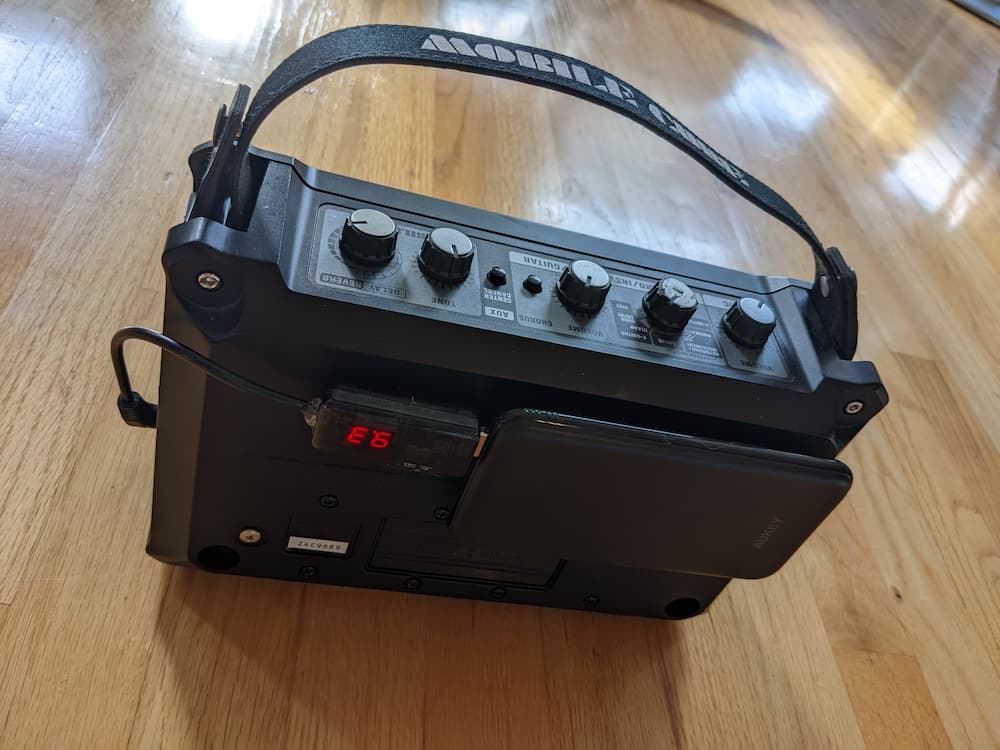
In practice, I rarely have to recharge. 10000 mAh of 5V is equivalent to ~5555 mAh of 9V capacity (10,000 * 5/9). By my estimation, at a rated operating current of 170 mA, it would run this amp for 5555 mAh / 170 mA = 32 hours?! Seems insane. But sure enough I’ve been using this rig casually out and about for 6 months or so and have recharged it maybe once?
Extra lazy and want to spend a little more? You could also skip all this modding nonsense altogether and just get one of these guys:
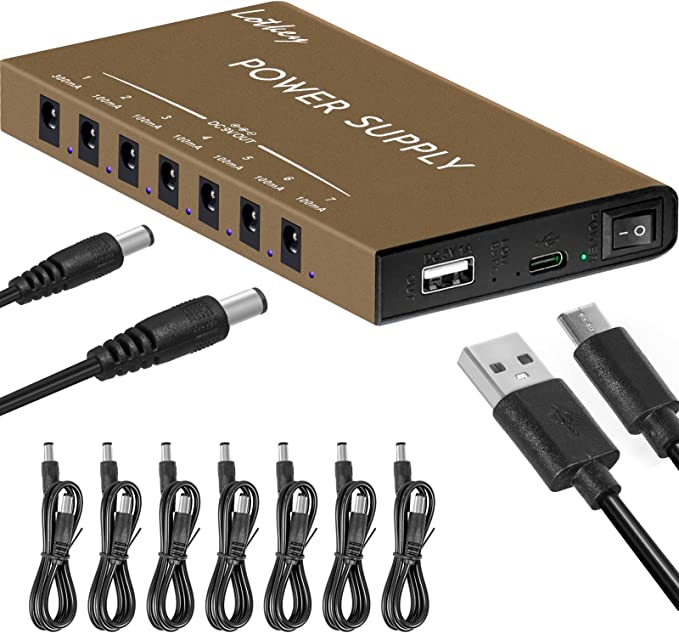
It’s a rechargeable 4400mAh 9V battery, and comes with all the ports and cables to power up to 7 analog effect pedals, or anything else that runs on 9V. I have one and it works just fine. Though you should make a note of how much rated current your device pulls. If it’s more than 100 mA, you need to plug it into the single port labeled “300mA”.
Very cool man. Thanks for sharing!
I used 5V USB Power banks to keep a cell phone with a worn-out internal battery running during video recording. It’s so worn out the phone won’t even boot with its internal battery.
I recently needed to figure out ‘outboard’ DC power for a mirrorless camera with 8.4 V Li__ battery.
It took a little while to figure out what features on the latest USB-C power banks answered my requirements. it was still a gamble because that is not what those are sold for, no one seemed able to tell me if it would work, and whether it was safe to risk connecting the camera to (via a battery adapter cable that has a USB-C plug).
I am not sure which features provided the solution but I had to get confident about what kind of USB power bank functionality offered 9V output.
USB-C phone chargers are smart enough to not charge certain ‘dumb’ devices that don’t identify themselves adequately, and recognize whether a device needs or can handle different charging modes. Selecting a newer power bank that offered power delivery at least equal to an 18W charger, and QC quick charge mode seemed to be the requirements (as well as having the USB-C connector).
I don’t remember the brand I bought (non-memorable brands abound on Amazon). 30000 mAh and 22W (pretty sure I did not get a 30W one), has worked on the mirrorless camera.
I am not sure how ‘clean’ the power output is because if I measure some Li chargers with a DMM, I see periodic recurring changes (transient increase in voltmeter display). I guess that could be communication (or ???) between charger and battery. I told myself to not trust it for analog/audio purposes.
So your DC/DC converter approach I initially thought was overly complex, inherently filters noise or data on it’s input power source. As long as its boosted level is free of its own artifacts, your solution insures ‘dirty’ power is less likely. & whatever you are powering it with probably has its own filtering.